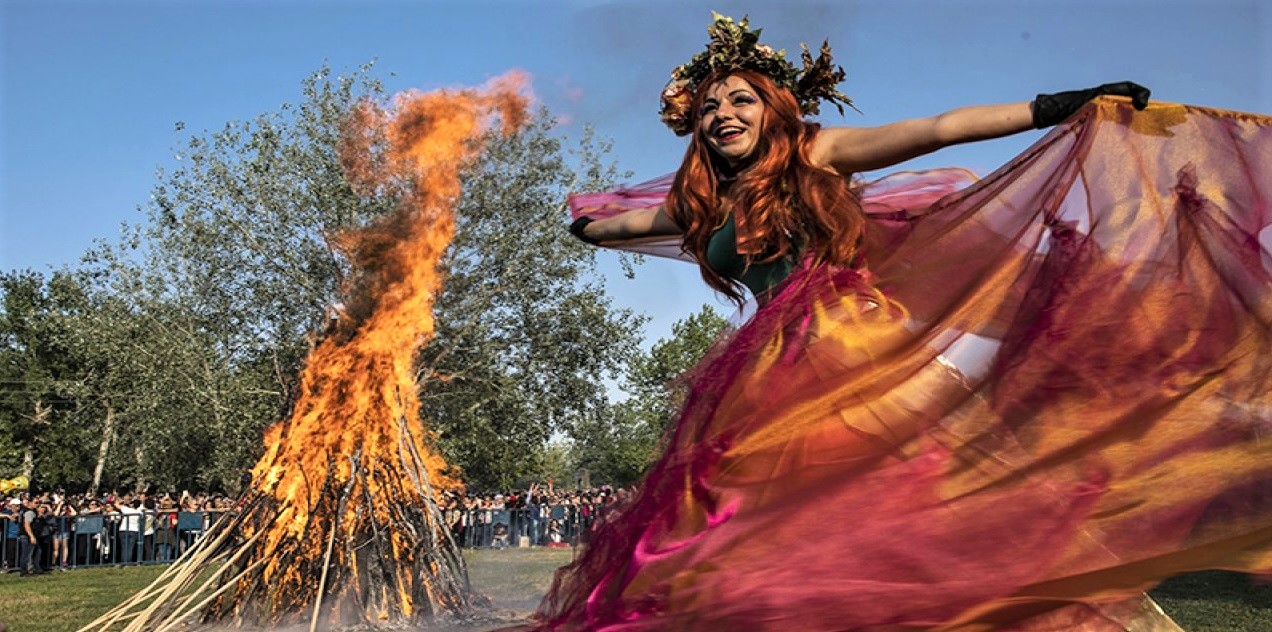
Near East University Faculty of Arts and Sciences Faculty Members Assoc. Prof. Dr. Mustafa Yeniasır and Assoc. Prof. Dr. Burak Gökbulut say that the figure of “Aksakallı-The man with white beard” in Turkish epics transformed into Hızır with Islam.
The arrival of spring continues to be celebrated in many parts of the world, as it is every year. Hıdrellez, which has an important place in Turkish culture and is celebrated as a spring holiday, is also considered to be the day when the Prophets of Hızır and İlyas, who are believed to have helped those in distress, one on land and the other in the sea, met on earth. Near East University Faculty of Arts and Sciences Faculty Members Assoc. Prof. Dr. Mustafa Yeniasır and Assoc. Prof. Burak Gökbulut shared interesting information about the origins of Hıdırellez, which was included in the “Representative List of the Intangible Cultural Heritage of Humanity” by the United Nations Educational, Scientific and Cultural Organization (UNESCO) in 2017.
Stating that Hıdırellez, which is celebrated on May 6 every year, is celebrated on May 20 in some parts of Anatolia, Near East University Faculty of Arts and Sciences, Head of Folklore Department Assoc. Prof. Burak Gökbulut said that the word Hıdırellez was derived from the names of the prophets “Hızır” and “İlyas”.
Assoc. Prof. Dr. Mustafa Yeniasır and Assoc. Prof. Burak Gökbulut stated that it is not possible to attribute this holiday, which is celebrated in many regions where Turks live today, to a single culture like other spring holidays. They said that the arrival of spring is celebrated as a tradition in many cultures from Anatolia to Mesopotamia, from Turkestan to Siberian Turkish homelands, from Iran to India, from the Middle East to Eastern Mediterranean cultures and the Balkans.

The “Aksakallı” motif mentioned in epics turned into Hızır in post-Islamic epics.
Emphasizing that the motif of “Hızır”, one of the main characters of Hıdırellez, entered Turkish culture with the acceptance of Islam, Assoc. Prof. Dr. Mustafa Yeniasır and Assoc. Prof. Dr. Burak Gökbulut stated that this concept also found a place in Turkish mythology and oral-literary works with the concept of “Aksakallı” before Islam. Assoc. Prof. Dr. Yeniasır and Assoc. Prof. Dr. Gökbulut said, “We can clearly see the transformation of the ‘Aksakallı’ motif, which is mentioned in epics, into Hızır in post-Islamic epics. In addition, it is seen that the motif of Hızır in Turkish folk tales and legends is also frequently encountered as an extraordinary being that appears and disappears suddenly and helps the protagonist.”
Assoc. Prof. Dr. Mustafa Yeniasır and Assoc. Prof. Dr. Burak Gökbulut explained that the source of the belief in Hızır is also mentioned in Islamic traditions, the Epic of Gilgamesh, the Legend of Alexander, the Jewish legend about İlyas and Rabbi Yeşna Bin Levi”. Hz. Ilyas, on the other hand, is believed to be a prophet sent to the Children of Israel and his descendants originated from Aaron.”
The origins of Hıdırellez rituals are connected with various social and religious structures.
The tradition of Hıdırellez and related beliefs are still widespread in different regions where Turks live, such as Turkey, Kyrgyzstan, Kazakhstan, Altais, Uzbekistan, Azerbaijan, the Balkans, Turkistan and Gagauzia. This concept, which is expressed with different words such as Hızır, Kıdır, Hızır-İlyâs, Hıdrellez, Hızır-Nebi in Turkish culture, finds its place in the ancient culture as a calendar. Assoc. Prof. Dr. Mustafa Yeniasır and Assoc. Prof. Dr. Burak Gökbulut said that various practices were carried out during the Hıdırellez celebrations and added; “The origins of these practices are different and are connected with various social and religious structures. Some of the practices performed include: jumping over fires, visiting graves, sacrificing, praying, making wishes in various ways, cleaning, making wishes on rose trees, visiting relatives, preparing various special foods for the day, organizing festivities in recreation areas and having fun by eating and drinking.”